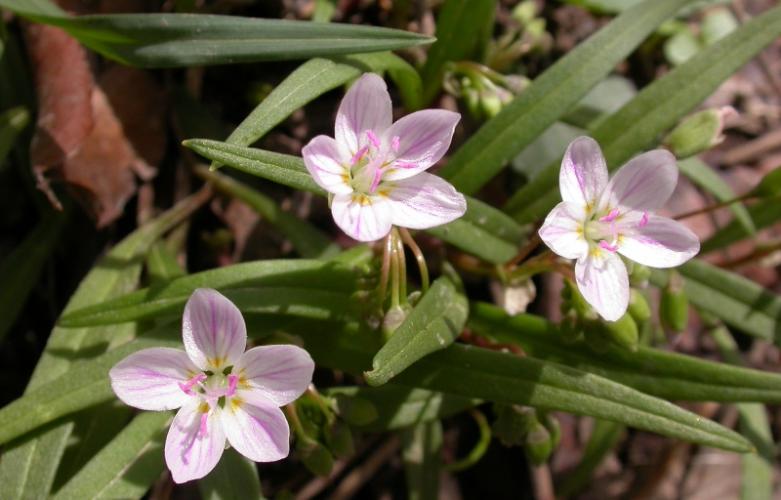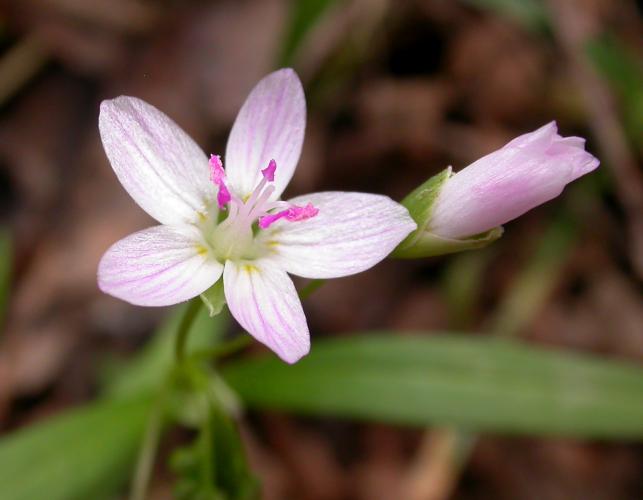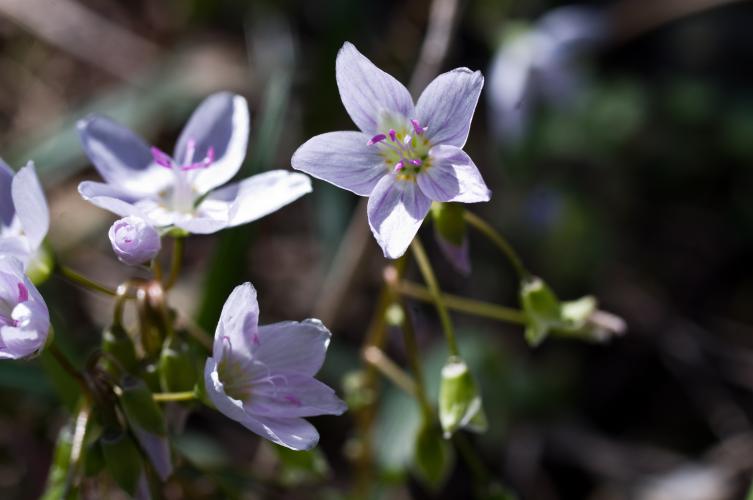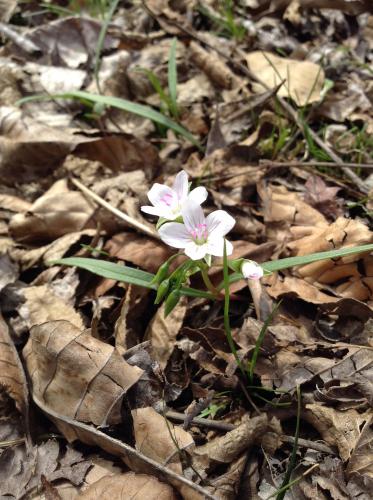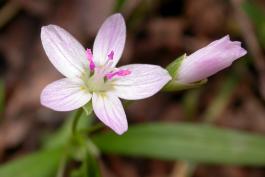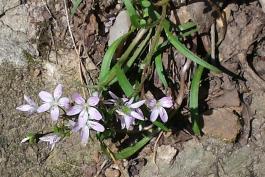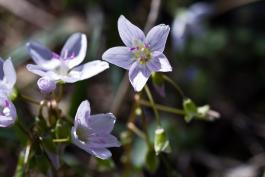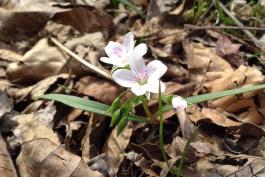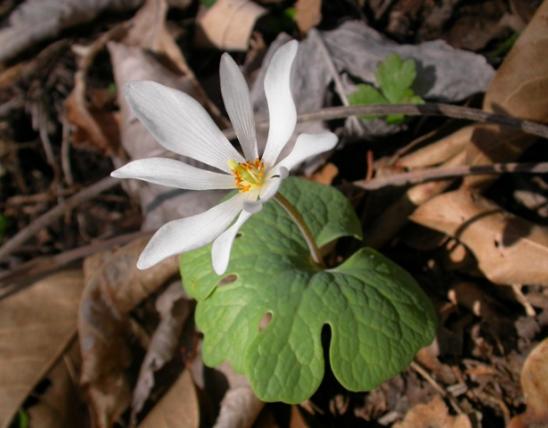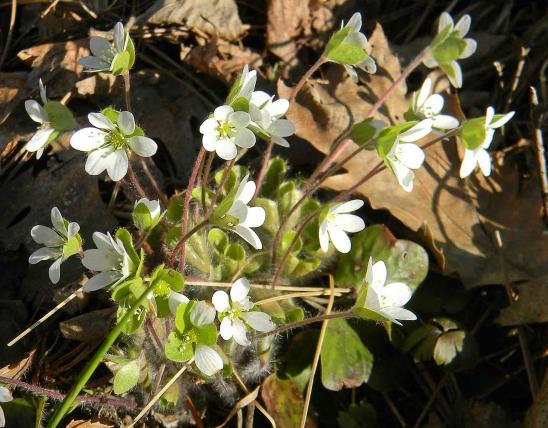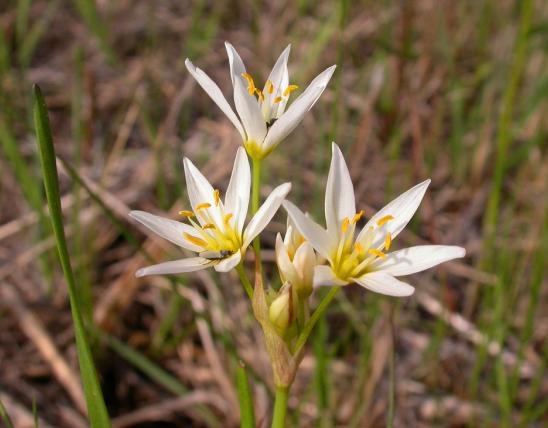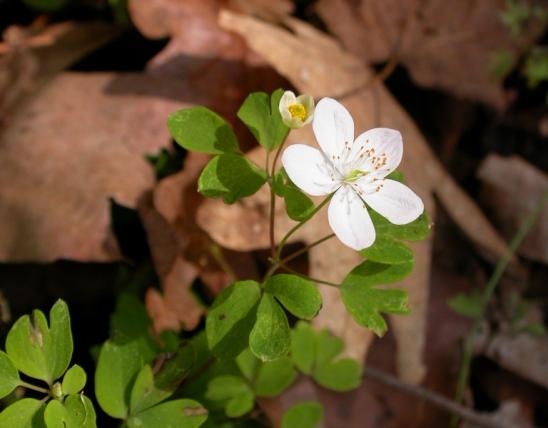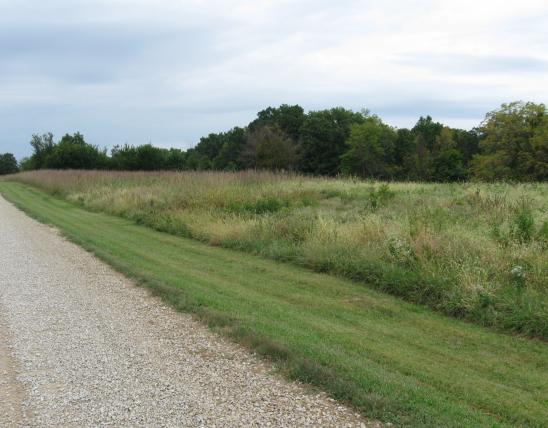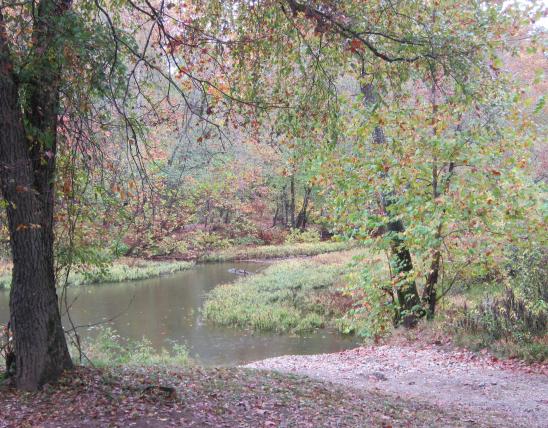Highway 61 divides this area's 148 acres (58 acres to the east and 90 acres to the west). The area consists of approximately 80 percent timbered land and 20 percent open land.
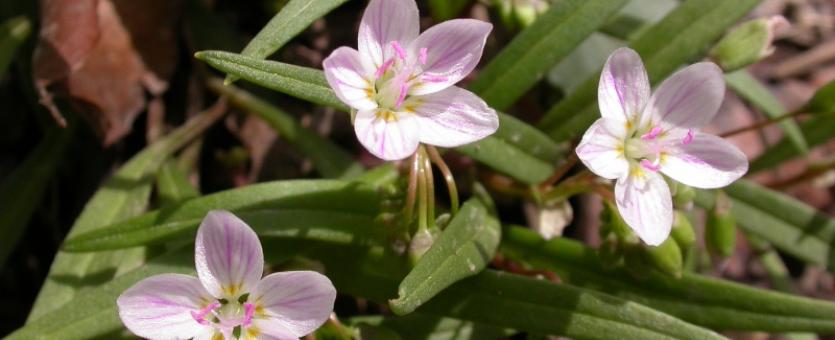
Spring beauty is our most widely distributed early spring flower. The flower stalks bear several flowers branching from the main stem; the flowers have 2 sepals that fall off as the flower opens; petals 5, white (sometimes pink) with distinct pink veining; and 5 pink stamens. Blooms February–May. Leaves: 1 or 2 basal, and 1 opposite pair on stems; narrow, lanceolate, tapering to a sessile base, dark green, sometimes purplish, fleshy. Root a rounded corm.
Height: about 5 inches during flowering; about twice that tall later.
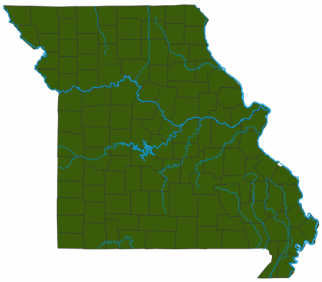
Statewide.
Habitat and Conservation
Found, often in abundance, in open woods, fields, valleys, suburban lawns, and sometimes rocky ledges.
Status
Native Missouri wildflower.
Human Connections
This well-named plant provides a bounty of beauty in the woods as well as in open areas and yards. Winter always seems long by the time we start seeing spring beauties, and what a welcome sight they are!
The potato-like corms (“fairy spuds”) and the leaves are edible. Native Americans ate spring beauty, but today's wild-edibles enthusiasts may find the tiny corms rather impractical for harvest.
Ecosystem Connections
This and other tender plants that emerge in early spring provide a welcome dietary boost for many animals, from insects to birds to mammals. Mice and chipmunks eat the corms. Insects that visit the flowers include a wide variety of bees, flies, and butterflies. One andrenid bee, the spring beauty mining bee (Andrena erigeniae), is specialized for pollinating this widespread species and its close relatives.
Early spring wildflowers accomplish their before they are shaded out by the trees above. After flowering, and after the leaves have nourished the corms, the aboveground portions of the plant wither away, and they spend the rest of the year as more or less dormant rootstocks.
Other plants in the purslane family (Portulacaceae) include the garden favorite called moss rose; common purslane, which is both a garden weed and a tasty wild edible; scarlet pimpernel, a small, nonnative wildflower with intense orange-pink flowers; and rock pink or fame flower, a native perennial of rocky glades with bright pink flowers.
